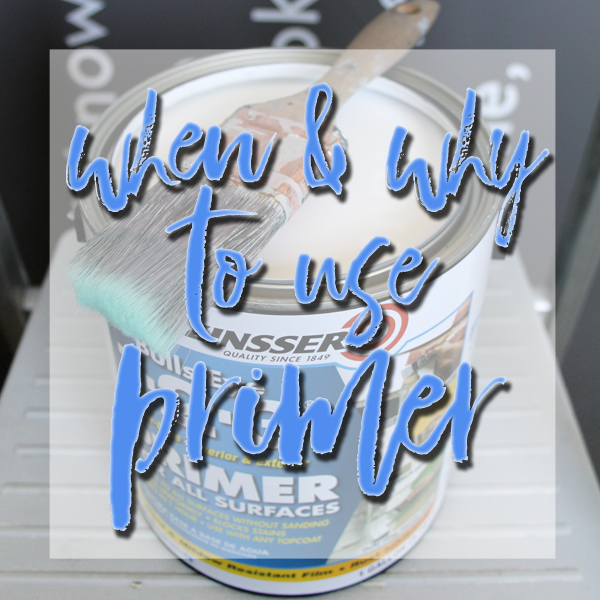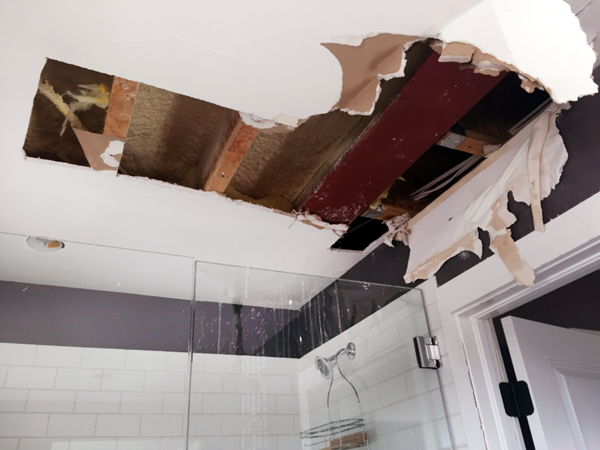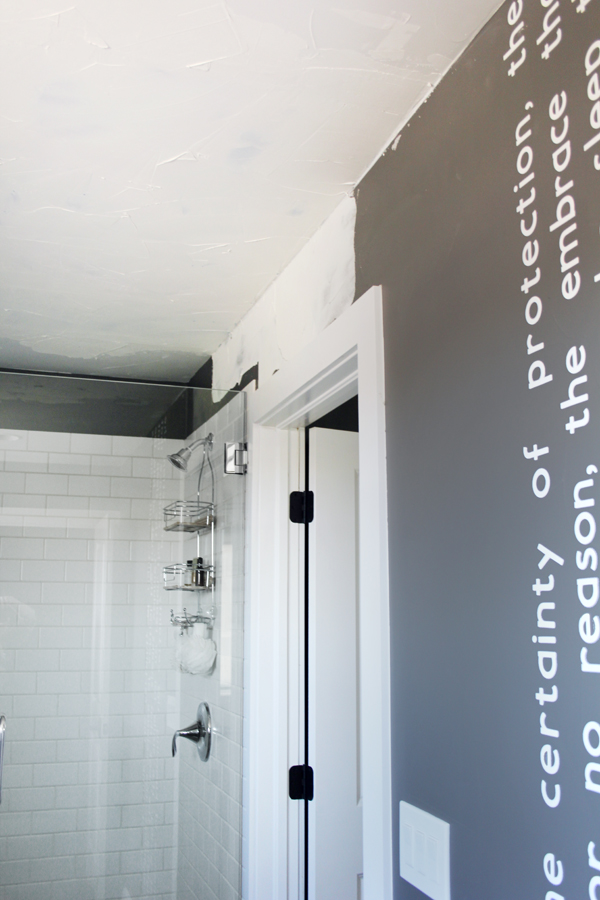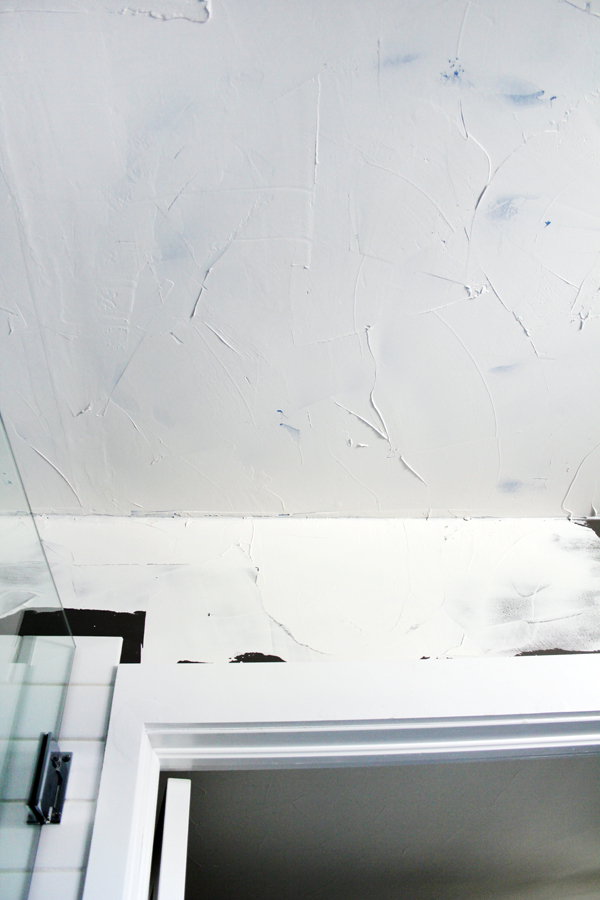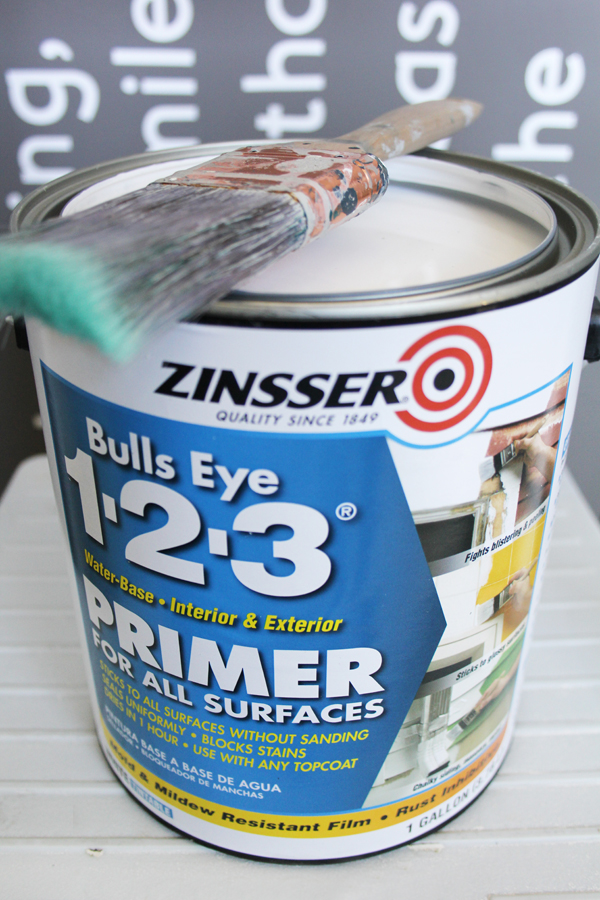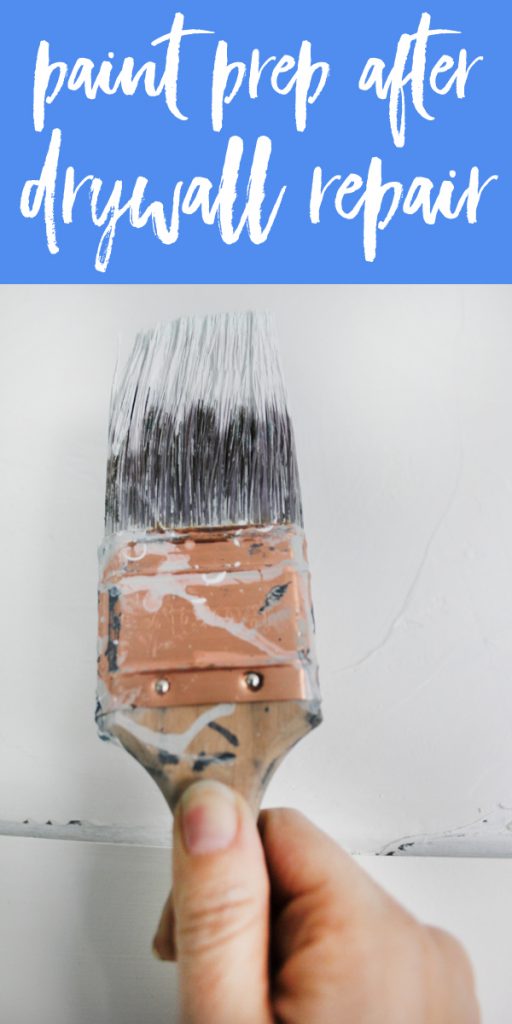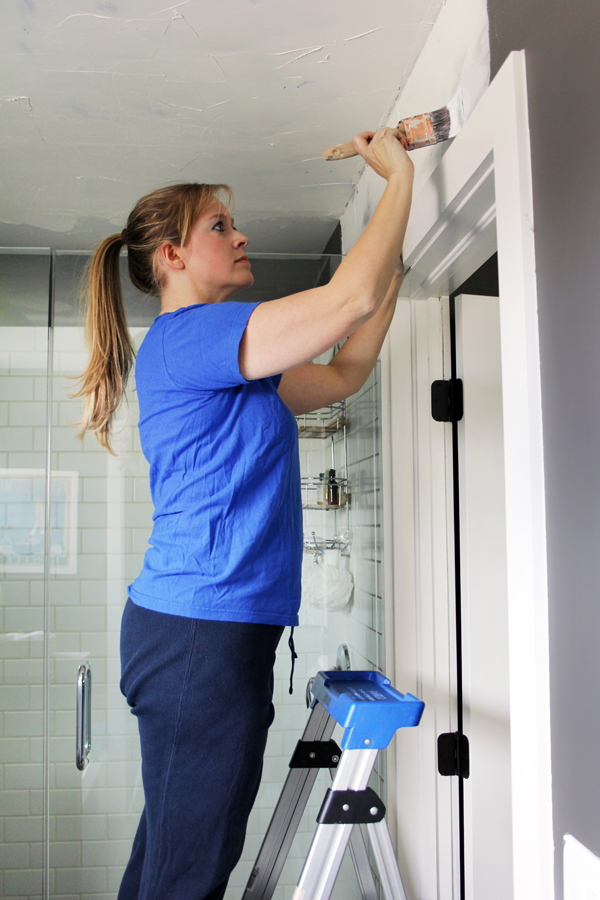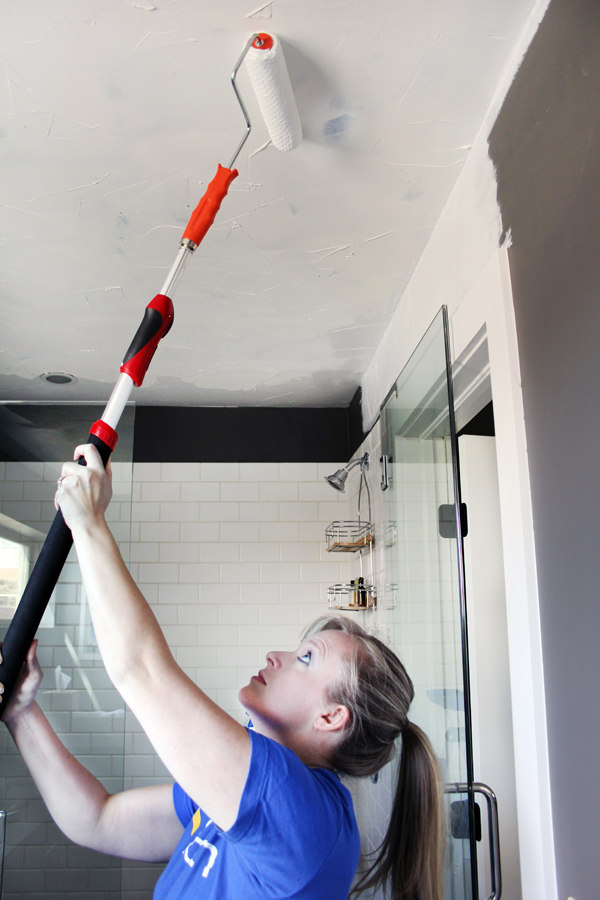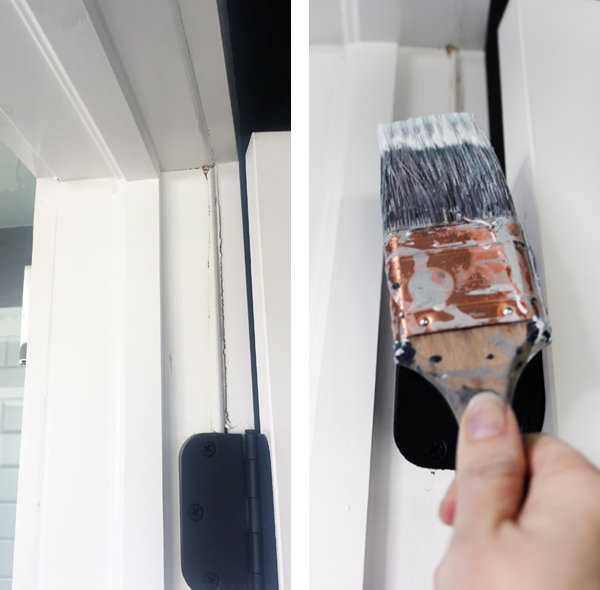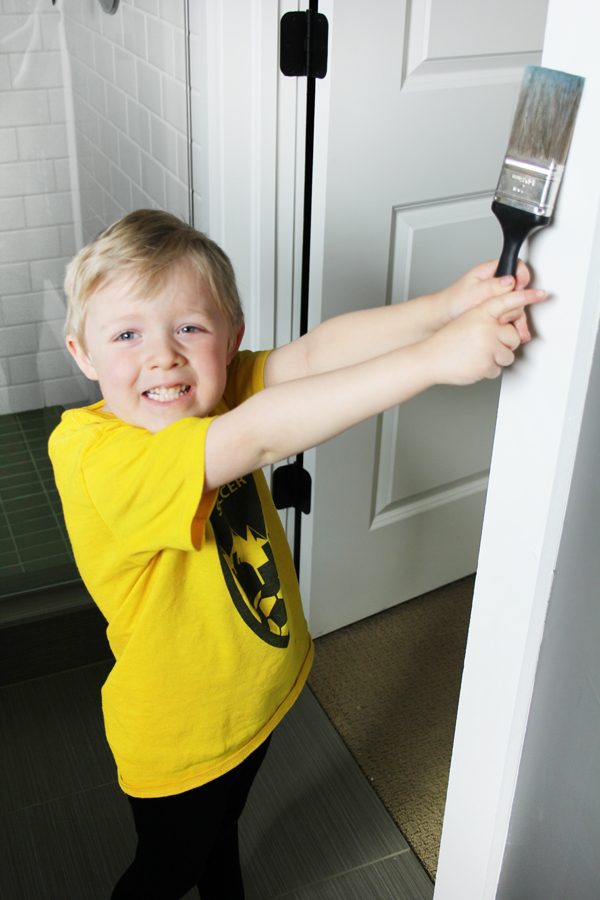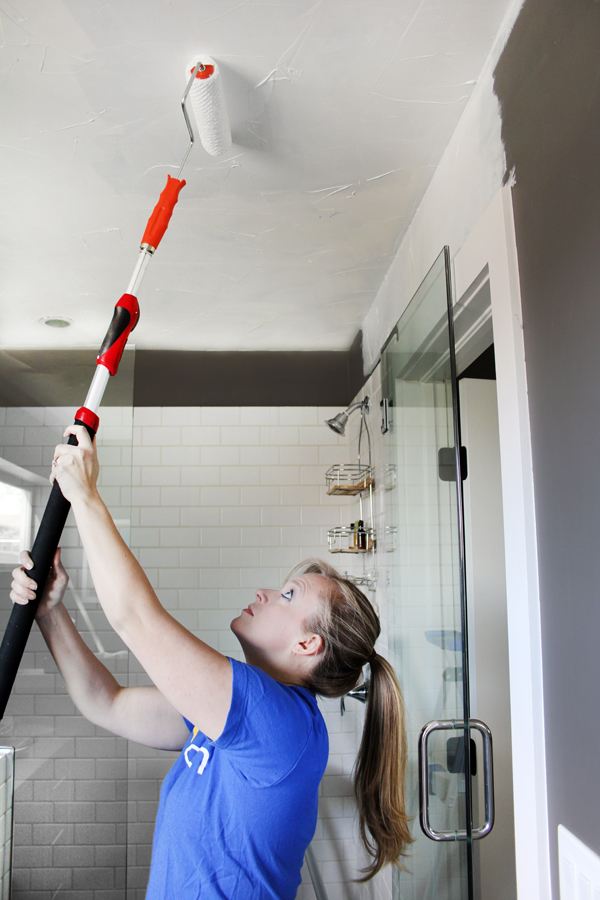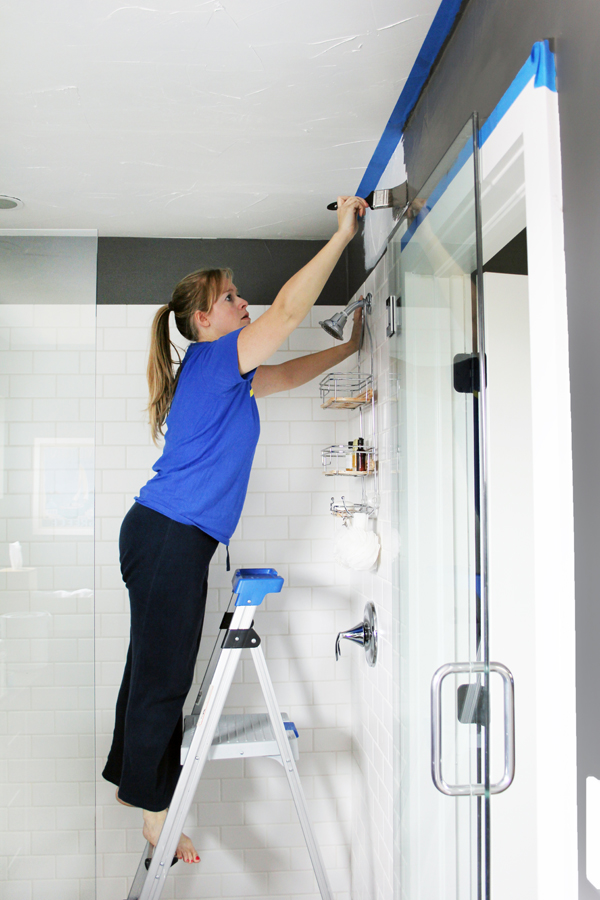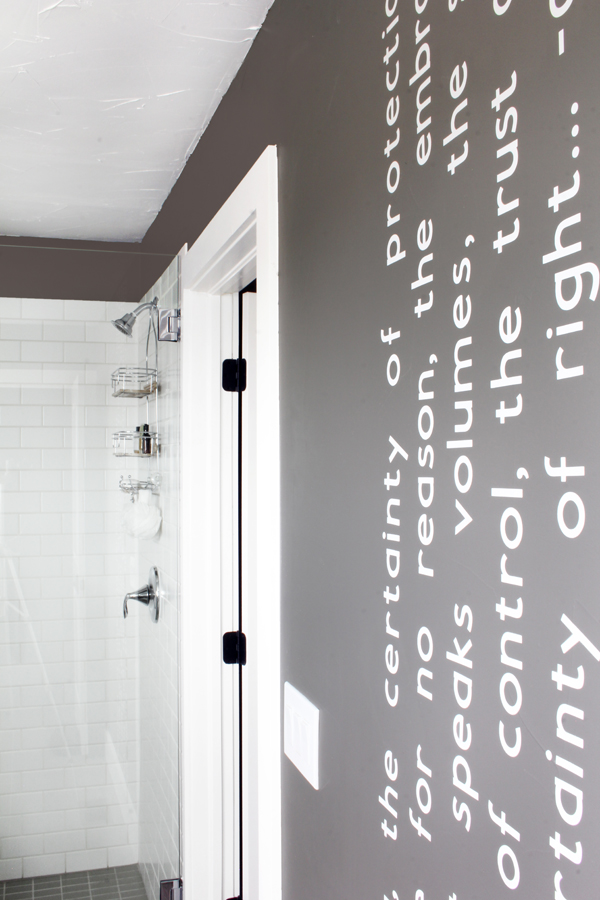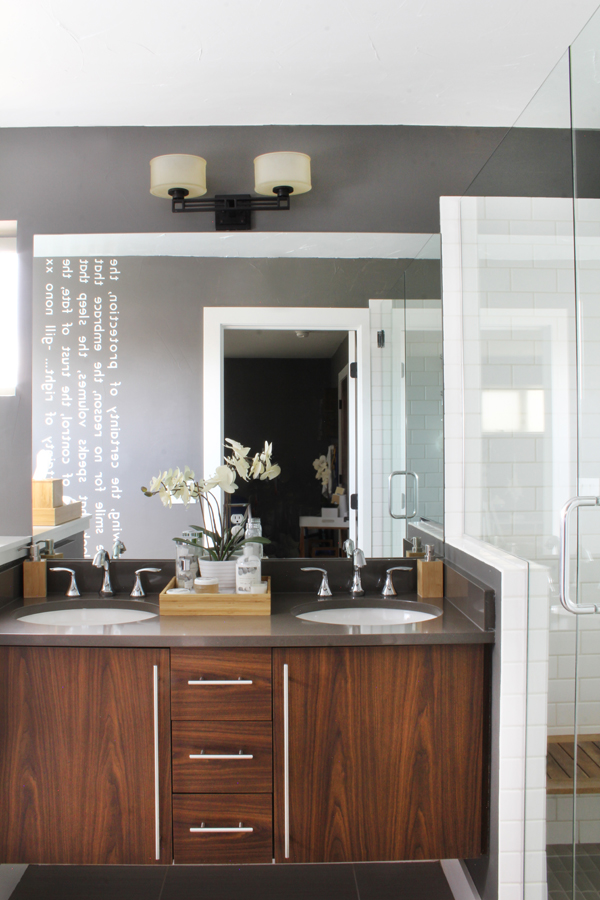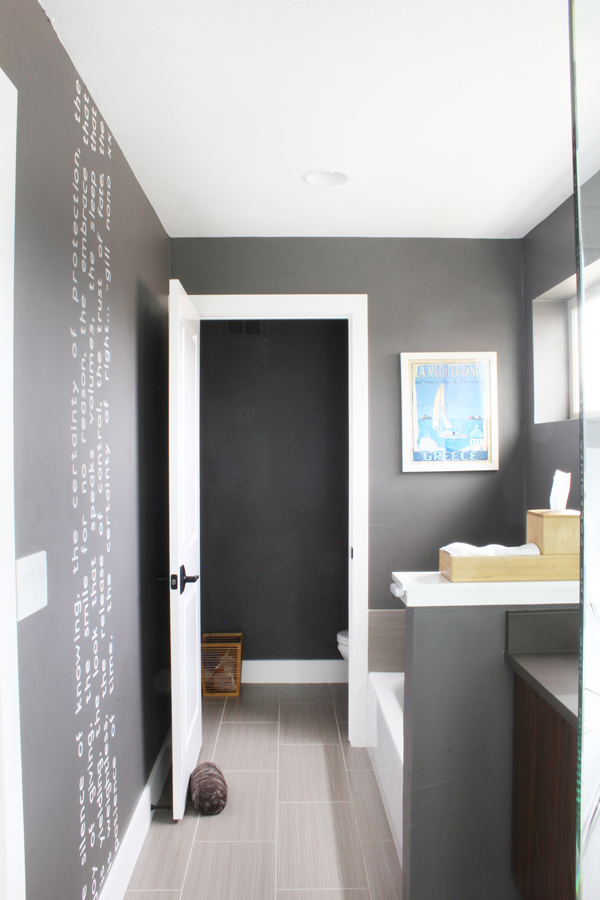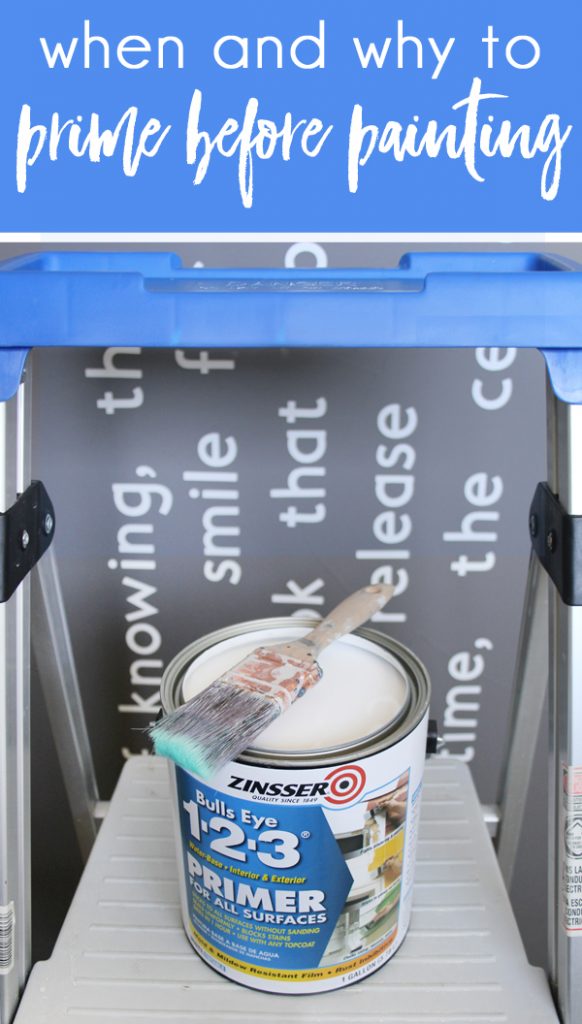Do you ever ask yourself, do I need to prime before paining this or is primer really necessary? I know I do! Back in law school I spent many hours painting a laminate bookshelf for my apartment, only to have the paint peel right off because I didn’t prime it first. I’m a much savvier DIYer now than I was back then, but I still find myself questioning when I need to use primer for projects around my house.
I asked my friends over at Rust-Oleum to recommend the right type of primer to use on new drywall and drywall compound in my bathroom, and they recommended Zinsser Bull’s Eye 1-2-3.
I used a brush to prime the small area of wall above the door and shower, and then used a roller to prime the ceiling.
Once the ceiling paint was dry, I used painters tape to prep the section of wall before touching up the charcoal gray paint. Some people have a steady enough hand to cut-in without tape, but I always spend the extra few minutes to tape before painting in order to get a nice, crisp paint line.
- applying too much paint that then runs and sags
- applying paint that starts to peel when you brush back over it
- having to put on 3-4 coats to cover stains
- being able to tell you put on 3-4 coats with a thick, uneven finish
- finished look is not the true color you were going for
So what about using a “paint with primer in one” product? These work best if you are painting the walls the same color, keeping the same paint sheen, and if the walls and existing paint are in good condition. But in most other situations, starting with primer will give you better results the first time. While paint and primers in one can seem to save you time, skipping the step of priming can lead to many DIY mishaps.
- Use primer to seal porous surfaces such as:
- builder’s flat paint, bare drywall, and spackled areas
- stucco, concrete and masonry
- raw wood
- weathered aluminum
- Permanently block out odors and stains, preventing bleed through the topcoat:
- Tannin bleed, food and beverage stains
- Knots and sap streaks
- Graffiti, ink and crayon
- Hide dark colors and surfaces:
- Decorative colors and faux finishes
- Panelling, wallcovering and borders
- Stained cabinets
- Create a layer to which paint will adhere, such as glossy, hard-to-paint surfaces, without sanding:
- Finished woodwork, shelving
- Old glossy paints, varnished trim
- Laminate furniture
- Glass, ceramic tile, decorative tile, formica
- Vinyl siding, shutters
- PVC piping, finished metals
